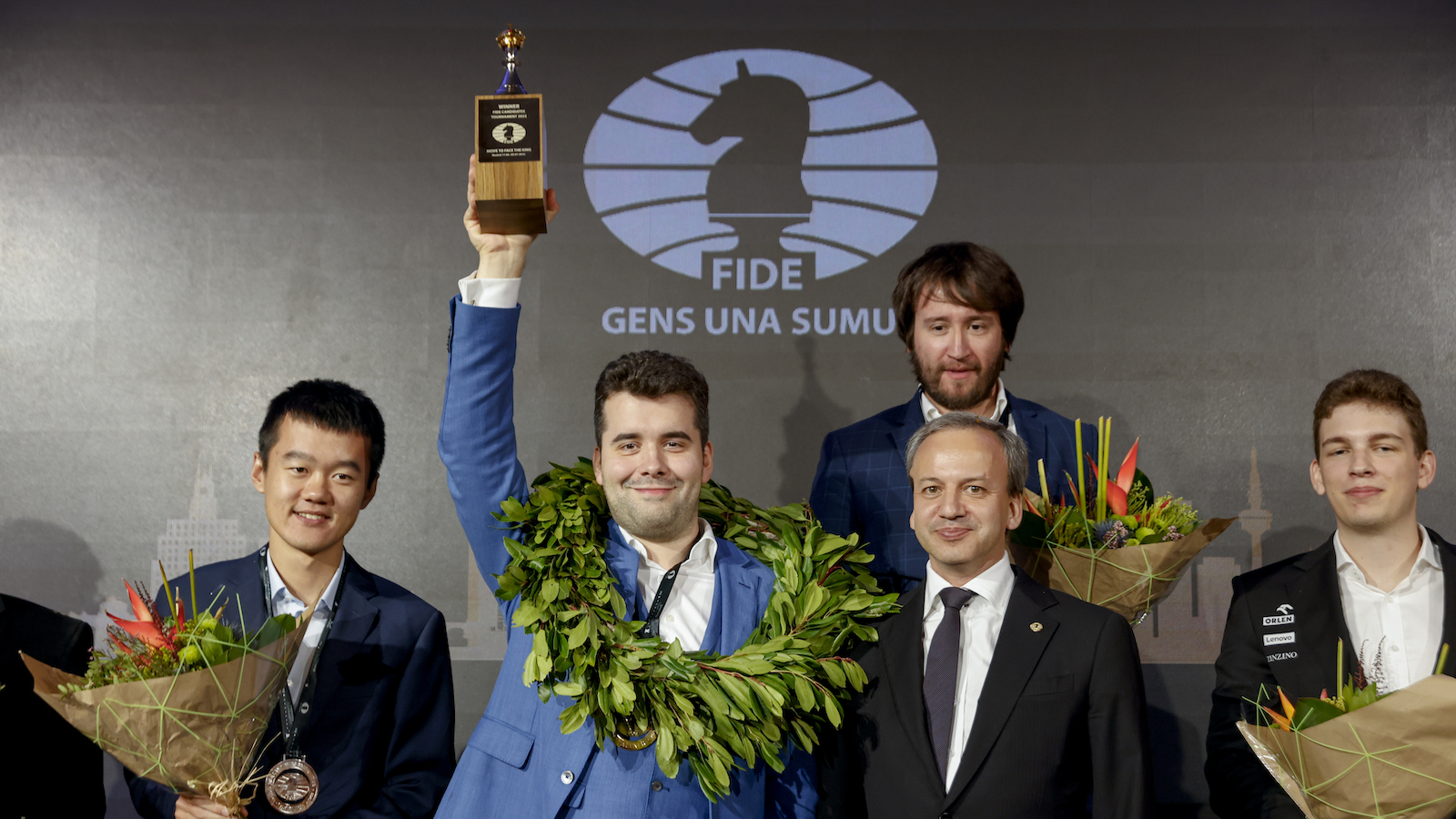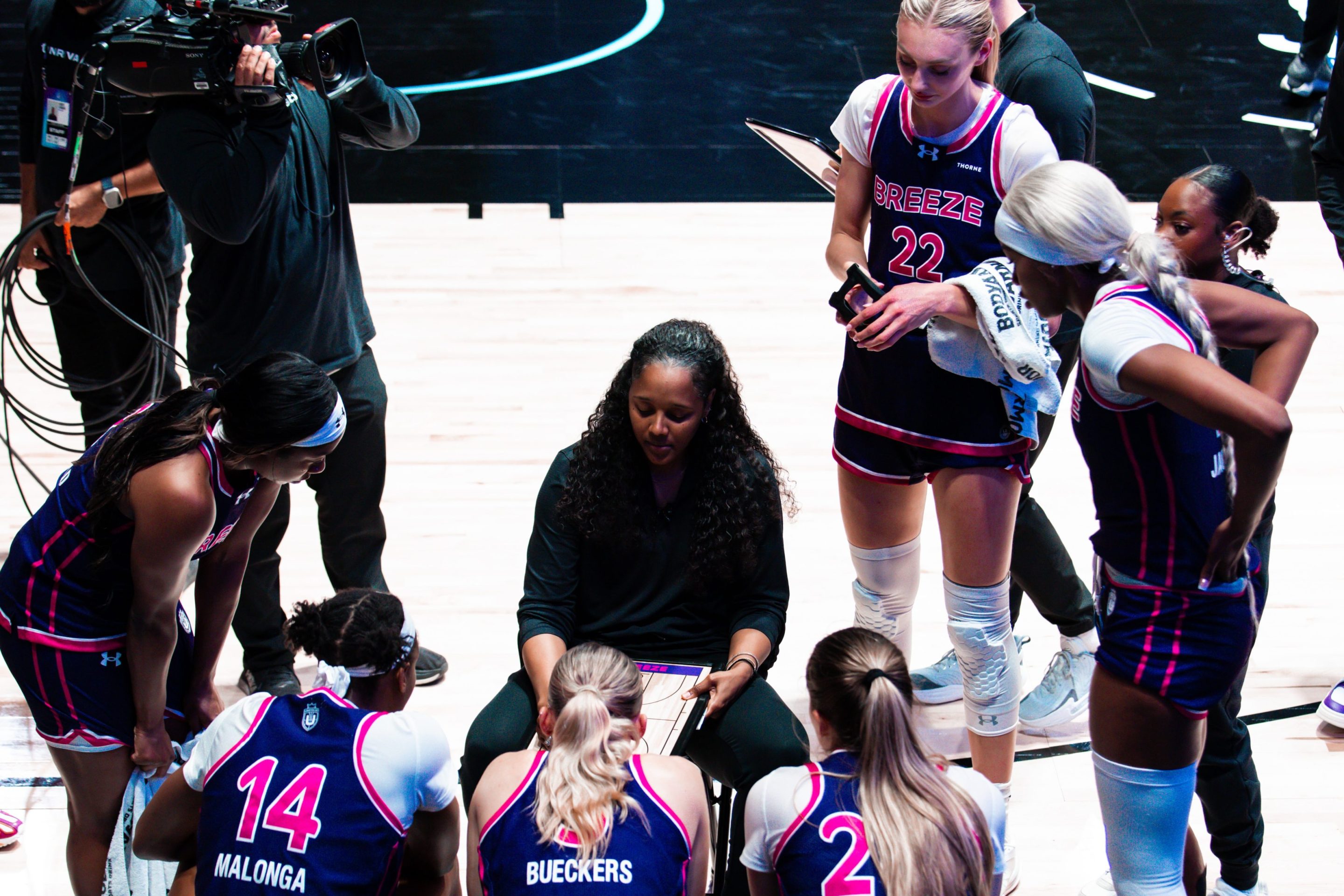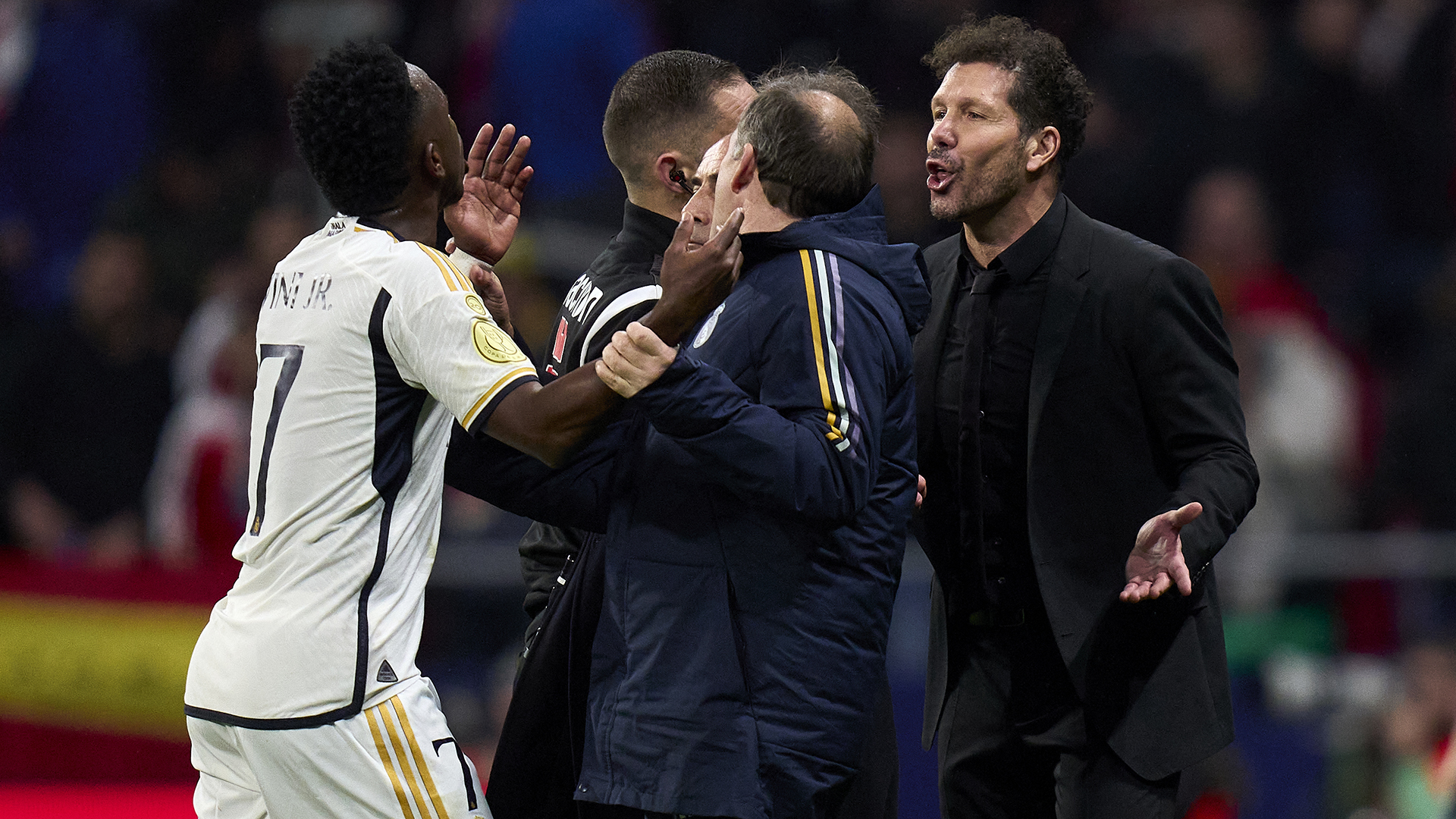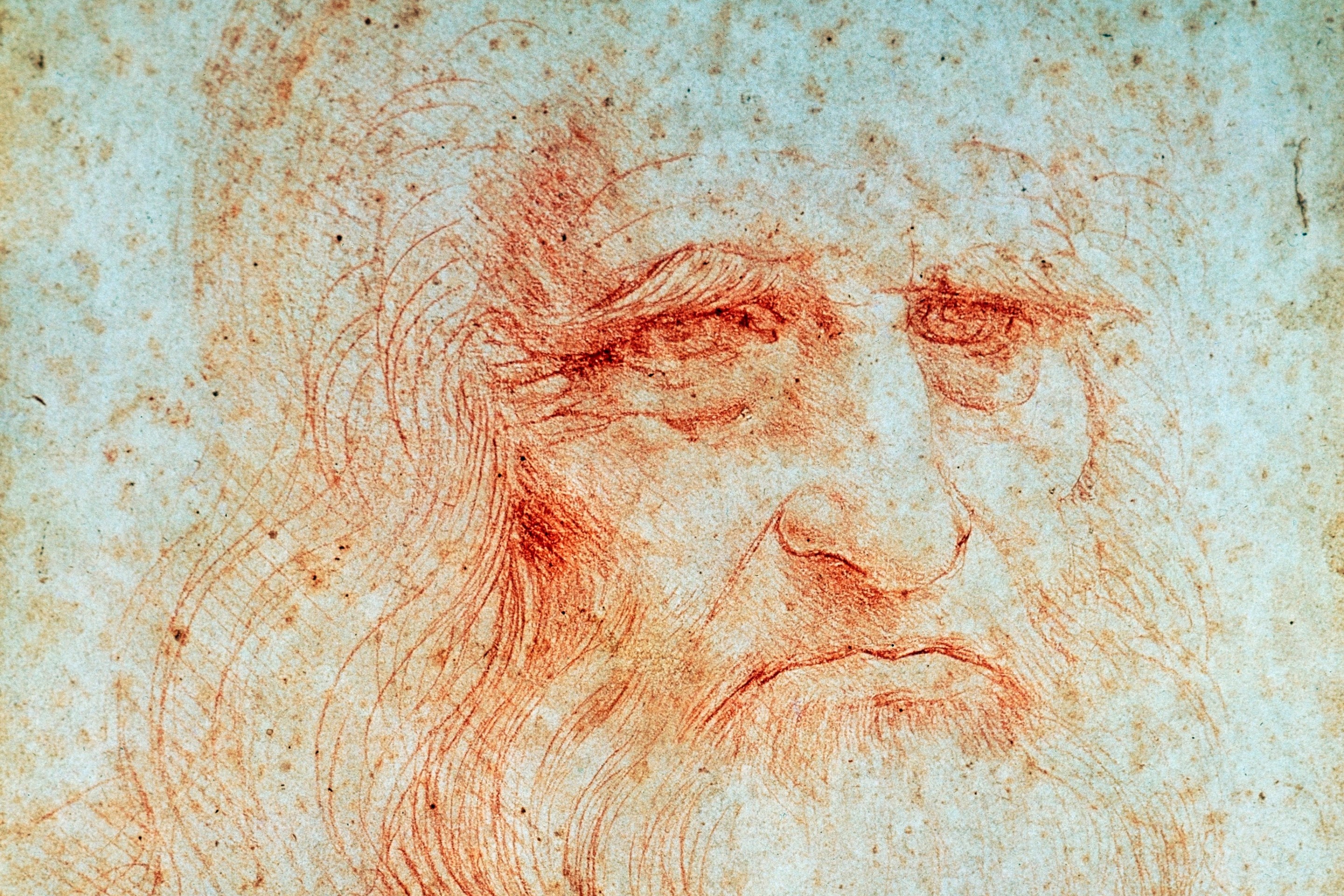Classical chess is in the midst of an existential crisis. What will the world of chess look like in the coming years, and what role will long-form chess play within that world? Chess writ large has changed immeasurably over the past few decades. The advent of firstly powerful and ultimately super-computers has rendered today’s game unrecognizable both on and off the board compared to the days of yore, and the incredible growth of chess as a popular pastime in the internet era has seen new audiences demand more and different content while bestowing power on the players to deliver it to them directly.
Magnus Carlsen’s decision to voluntarily relinquish the title of world chess champion that he has held since 2013 is undoubtedly a headline moment in chess history. Whether it is one day seen as the beginning of the end of classical chess will be a question for future historians of the game. What we know with certainty is that when world No. 2 Ian Nepomniachtchi takes on world No. 3 Ding Liren in a 14-game head-to-head match in Astana starting this Sunday for the chance to be crowned the 17th world champion, chess will, for better or worse, be entering a new era.
Nobody has ever tried to sell “Become a professional chess player” as a get-rich-quick scheme. It’s hard to find decent estimates as to how many players historically made a full-time living from chess, but it was never a large number. The players at the very tippy-top of the rankings could make enough money in the various tournaments to make a decent living, but when factoring in the price of their travel, accommodation, and the services of any assistants (or seconds), many players would need to rely either on stipends from their national association or some other patron or to make money on the side from coaching, seconding, or publishing. However, in the internet era, players have more options to create income streams: online tournaments now mean that high-level players can play competitively from the comfort of their homes, and players and personalities of all strengths can attract interest and therefore sponsorship and advertising dollars from streaming and videos.
As a result, chess is experiencing the same shift in priorities that, to take one example, cricket is experiencing in the 21st century. In an echo of the changes at the chessboard, shorter-format, white-ball cricket has long since won its battle for legitimacy, and, in now crowding the calendar with more and bigger tournaments each year, threatens to smother Test match cricket (the original and historically most prestigious format) straight out of existence.
In both cricket and chess, the paradigm shift is being spurred simultaneously by the audience, moneyed interests, and the participants themselves. Whether it’s because of shortened attention spans, overtaxed workers having less free time, or because the entertainment value is higher, there are simply a more people who will watch the shorter format of both cricket and chess than will watch an equivalent days-long contest. Commercial deals naturally follow those eyeballs: the Indian Premier League struck a five-year, $6 billion TV and streaming rights deal last year, and the new Champions Chess Tour, a series of short-format online tournaments featuring the world’s elite, commands far greater sponsorship money than the most prestigious classical tournaments; in each case the broadcast partners naturally have an interest in cultivating long-term interest in their shorter-format product. And, as is their right, participants tend to go where they can be best compensated for their labor: there are more and better-paid opportunities for players to earn one of dozens of T20 franchise roster spots than one of the 11 on their national Test team, and likewise for chess players to participate in high-level online tournaments or create streaming content rather than travelling across the world to slog it out in hard-fought classical tournaments.
And so, Magnus Carlsen deciding to relinquish his world championship title comes at the worst possible time for those who want to keep classical chess as the undisputed pre-eminent format. After chess’s popularity exploded on the back of the streaming- and Hollywood-spurred pushes, it’s been a dark period for our beloved game of late, with chess hitting the headlines for all the wrong reasons: the ugly Carlsen-Hans Niemann cheating scandal, recent revelations of repeated predatory sexual assaults by a leading coach and commentator, and the governing body’s continuing idiocy culminating in the utterly amateurish botching of the women’s New Delhi Grand Prix.
I’ve previously compared Carlsen to LeBron James—he’s a complete one-of-a-kind who is chasing the GOAT title from a man who redefined the game in the 1980s and 1990s—but his decision to cede his world championship title renders this match the equivalent of the Michael Jordan baseball-era NBA Finals. He’s chess’s biggest name and most dominant player: world champion since 2013; world No. 1 for nearly 12 consecutive years, with no usurper in sight. Things just aren’t quite the same when he’s not around.
Carlsen is following through on his long-held desire to be free of the drudgery of preparing for chess’s most prestigious head-to-head tournament, stating that the negatives of preparing for world championship matches had begun to outweigh the positives of winning and holding the title. Carlsen hasn’t retired—he’s still the best in the world and playing a full slate of tournaments, sans this one—and so the unfortunate reality is that, while he sits in the grandstand with a fresh man-bun watching two lower-ranked players fight for his title, for the time being at least, “world champion” won’t translate directly to “best."
Whether you think these priority shifts are a good or bad thing will depend on your personal relationship to each format of your game, and will probably more than likely mirror where you stand in the broader culture wars, with sport of course continuing to be one of the main theatres of battle for public opinion in that ongoing conflict. For what it’s worth, my own view is that I love the newer formats and believe that each game has been positively impacted by their emergence and thriving, but would deeply rue if Test cricket and classical chess were beaten into such endangerment that they no longer held any meaningful weight in the eyes of the fans.
Whichever way you look at it, chess is heading into an uncertain time. But: there’s excitement in uncertainty. Chess enters a new epoch, starting with this tournament. Two men are poised to fight for position at the tip of the spear.
Ding Liren is a chess player’s chess player. He’s beloved in the chess community for a simple reason: he is just so damn good.
At his best, Ding is capable of utterly spellbinding chess of a quality only ever matched by a handful of players in history. He’s got one hand on the fictional "Game of the Century" award which we’ll be debating until the next fin de siècle. His mind-blowing masterpiece against Bai Jinshi with the black pieces in the Chinese League in 2017 was as beautiful, from start to finish, as anything you’ll find in the Louvre. (In my view, it’s neck-and-neck for the best match of the millennium so far with the then-16 year-old Wei Yi’s magnum opus against Lazaro Bruzon Batista back in 2015.)
Ding often creates thorny positions on the board, trusting his incredible calculation ability to either see him through the complications to victory or to walk a tightrope back to an even position. He exclusively plays 1.d4 with white (he switched to 1.e4 in this year’s Wijk Aan Zee tournament in order to hide his world championship preparation, and promptly lost 23 rating points), and with black is one of the world’s foremost experts in the various strands of the Ruy Lopez. He’s capable of playing both solid and offbeat openings, much like his opponent.
Ding somehow found time to study law at Peking University Law School prior to breaking into the world top 10 in August 2015, climbing to the No. 3 spot in February 2019 and staying there ever since. He achieved a record unbeaten streak of exactly 100 games across 15 months in 2017-18, breaking former world champion Mikhail Tal’s previous all-time elite-level record of 95 games, a distinction he held until a certain Magnus Carlsen hung 125 back-to-back without a loss over more than two years, from 2018-20.
Ding has long been touted as a future world champion, and it’s a sporting shame that we never got to see him take on Magnus for the title. His path to the top of the mountain ultimately followed a most unconventional route: he failed to qualify for the 2023 Candidates’ Tournament (visa issues prevented him from playing one of the qualifiers), and it was only when Sergey Karjakin posted online in favor of Russia’s invasion of Ukraine, so hard that he got himself booted from that tournament, that the door opened for a replacement to take his seat. Ding was the highest-rated player who had not qualified and was nominally first in line pursuant to the tournament’s regulations, however, his pandemic-induced inactivity meant that he had not played enough games to qualify for that replacement position. And so, the Chinese chess federation hastily organized Ding a farcical schedule of 28 games in a month to manufacture his locus standi before the qualification window passed. That being done, Ding didn’t even win the Candidates’ Tournament, and only leapfrogged an inexplicably careless Hikaru Nakamura into second place with a win against him in the final round. With Carlsen subsequently announcing his abdication of the world title, Ding was once again given an invitation to a tournament for which he didn’t originally qualify—a Steven Bradbury-esque run of good fortune. And yet, few would begrudge Ding his shot at the title, because he’s the best player who hasn’t yet fought for a world championship, and we all want to see him get his shot.
His opponent, our old friend Ian Nepomniachtchi, will be looking to bounce back from his drubbing at Carlsen’s hands in the 2021 world championship match. When Nepo folded to Carlsen in throwing three of the last four games of that match in single-move pawn blunders, it seemed impossible that the former prodigy would ever etch his name into the history books as world champion. And yet, he’s back and looking to be in great form, having won the Candidates’ Tournament for the second time in a row, again with a round to spare, including a win over Ding in the first round. He had some decent fortune in that tournament, with a couple of his opponents opening the door to some surplus half-points, and Nepo was good enough to take advantage. Now, he’s looking to go one better than last time, and claim the world championship crown.
Nepomniachtchi was the most prominent signatory of a heartfelt and moving open letter from 44 leading Russian chess players addressed to Vladimir Putin calling for an end to the war in Ukraine, which ended: “We support peace. Stop the war.” A Nepomniachtchi victory could provide an opportunity for him and his colleagues to amplify his message for peace to the chess-loving Russian public.
Broad sanctions against Russia due to the war mean that this will be the second championship in a row at which will Nepomniachtchi will play under the neutral FIDE (Fédération Internationale des Échecs) flag: recall that last time, the World Anti-Doping Authority’s punishment of Russia’s systemic doping programme prevented the tricolor from accompanying Nepo in the 2021 world championship match in Dubai.
This is the reason that the title is vacant in the first place: preparing for a 14-game head-to-head world chess championship match is such an arduous and disagreeable task that the best player of all time eventually decided to say: Nope.
There are more potential variations in a game of chess than there are atoms in the observable universe. Some moves give rise to more favorable positions than others, and so you’d probably prefer to play the good ones over the bad ones; and since the pieces start in the same position in every game, it’s possible to memorize some of those which are good and those which are bad ahead of time. But chess is obviously far more than just a game of memory, because it's impossible to prepare for every single variation, and you’ll be “out of book” at some point in each game; you’ll also need to understand why certain moves and move orders are good or bad.
If you’re the kind of person who likes being in control, the good news is that you’re responsible for exactly half of what happens on a chess board, but the bad news is that your opponent (who is trying to beat you) is responsible for the other half. You have some control over where you want to steer a game, but ultimately you’re in the boat with your opponent, and you both get the opportunity to row.
You probably don’t need to know what to do with the black pieces against the worst opening move 1.g4 (you can figure that out at the board), but if, like Ostap Bender, you play 1.e4 with white, you’ve got to, at a minimum, be familiar with your opponent’s responses 1 ... c5 (the Sicilian Defense), e5 (simply called “e4 e5”), e6 (the French), c6 (the Caro-Kann), and d5 (the Scandinavian), and probably even d6 (the Pirc) and Nf3 (Alekhine’s Defense). You can probably ignore variations stemming from the other possible responses, but you’d have to have a variety of answers for each of these first moves, and for different responses to each of your second moves, and so on. In many lines, elite theory extends past 15 moves, and those branches extend from every variation in all sorts of directions—world No. 6 Anish Giri’s course on the Najdorf Sicilian (which builds from a position that already assumes a particular sequence of five moves by each player) contains more than 24 hours of video, covering 921 trainable variations. And, the state of theory is never static, with improvements being found all the time, often rendering yesterday’s best moves refuted.
Over the years, the top level players build up enormous stores of knowledge, through nooks and crannies of mainline theory, and uphill and down dale of sidelines. You’ll hear them say things like, I remember studying this line at a training camp back in Berlin in 2012, I don’t really remember the details, but …, and then they’ll rattle off 15 moves of theory.
The players need to supplement their opening repertoire for big tournaments with targeted preparation aimed at both finding edges over their particular opponent and insuring against their opponent’s attempts to do the same. Eight-time Russian Championship winner Peter Svidler once told me that 100 percent of his preparation for the Candidates’ Tournament was spent on opening preparation, with nil dedicated to middlegame or endgame study.
How to spend your preparatory resources is partly a strategic question. Do you make the decision to only focus on preparing lines stemming from one opening move (maybe 1.e4) with white, focusing all your study on honing specialized continuations from that branch of the decision tree? Or, do you prepare lines in both 1.e4 and 1.d4, spreading your preparation thinner but giving you the option to probe deeper into your opponent’s repertoire? Do you prepare the lines which you’ve played throughout your career up until now, which have served you well enough to get to this point? Or do you focus on a new area, hoping to catch your opponent unprepared, but venturing into areas where your instincts may not be as strong?
With so long to prepare for chess’s biggest head-to-head match, Nepo and Ding will have been up to their eyeballs in opening theory for months before they arrive in Astana. No doubt they’ll be ready to spring some surprises on their opponent—and then to take a break to do anything other than look at a chess board for a while.
Our two protagonists will be going at it over 14 head-to-head games over three-and-a-half weeks in the St. Regis hotel in Astana, Kazakhstan, with a day of short-format tiebreaks to be played if the score is knotted at 7-7. The players will split the €2 million prize fund 60/40. In each game, the players will be granted 120 minutes for their first 40 moves, another hour for their next 20 moves, and then 15 minutes for the rest of the game plus an increment of 30 seconds per move starting from move 61.
Nepomniachtchi leads the lifetime head-to-head by three wins to two, with eight draws, but the match is seen to be something of a coin flip. They’re both very entertaining middlegame players, and it’s likely that we’ll see opportunities for both players to carve out some wins, as they figure to lure each other into sharp complications more conducive to decisive results than the dry and even positions which we saw in most of the Carlsen-era matches. Neither is as utterly perfect as the outgoing champ, and we should expect some blips and mistakes on each side throughout the 14 games. This could shape up to be a rollercoaster with decisive games potentially going each way.
The games will start at 5:00 a.m. EST in your United States, beginning on Sunday, with a rest day following every second game day. There’s plenty of great coverage to be found: follow live with the usual suspects at Chess24 and Chess.com, or with my favorite guy ChessNetwork, or you can follow the recaps of each game from folks like Agadmator. We’ll have a recap here on Defector at the halfway mark, and again at the conclusion of the match.
The next chapter of the history of chess starts here, folks. Let’s go!






